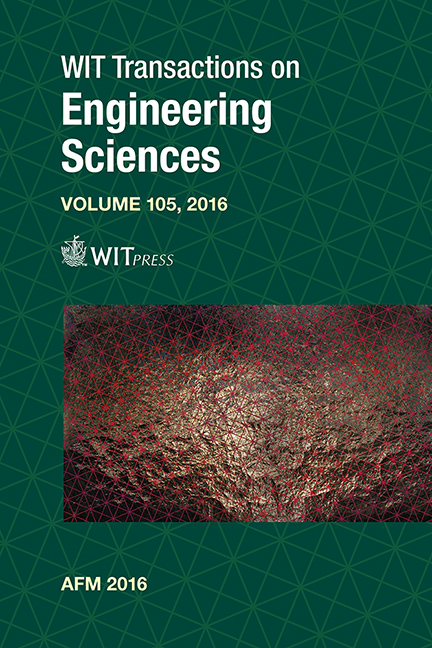Numerical Simulation Of Joule-heating Flow In A Cuboid Cavity By The GSMAC Method
Price
Free (open access)
Transaction
Volume
105
Pages
12
Page Range
127 - 138
Published
2016
Size
2,936 kb
Paper DOI
10.2495/AFM160111
Copyright
WIT Press
Author(s)
J. Zhou, N. Tsuzuki, H. Kikura
Abstract
Flow behaviour was observed in simplified model cavities of a high level liquid waste (HHLW) reprocessing glass melter. The effect of heating volume on the Joule-heating flow was evaluated using two cavities with different heating volumes. Electrodes were set to generate Joule-heating. A chaotic flow occurred because the lower part of the cavities was heated while the top surface of the cavities was cooled. Downflow and upflow occurred alternately in cavities. One cavity was a simple cubic cavity, for which it was easy to observe effects of thermal boundary conditions on Joule-heating flow. The other one was a cuboid cavity, which has the same aspect ratio of the upper part of the glass melter. Joule-heating flow behaviour in cavities was calculated by the GSMAC-FEM (Generalized Simplified Marker and Cell-Finite Element Method) code. The GSMAC method can calculate flow field, thermal field and electro-magnetic field as a fully coupled analysis, which exists in the glass melter. To know the flow behaviour in each cavity for the condition with electrode cooling and the condition without electrode cooling, 1-D flow behaviour and 2-D flow behaviour were calculated. It was found that the chaotic flow behaviours generated by Joule-heating were changed by the different conditions. A stable upflow occurred under the chaotic flow area in cavities for the electrode cooling condition. However, the aspect ratio decided the strength of the stable upflow. In the case of the cuboid cavity, the effect of the downflow near the electrodes decreased. The same phenomena could be predicted in the melter.
Keywords
GSMAC method, Joule-heating flow, chaotic flow, cooling condition





